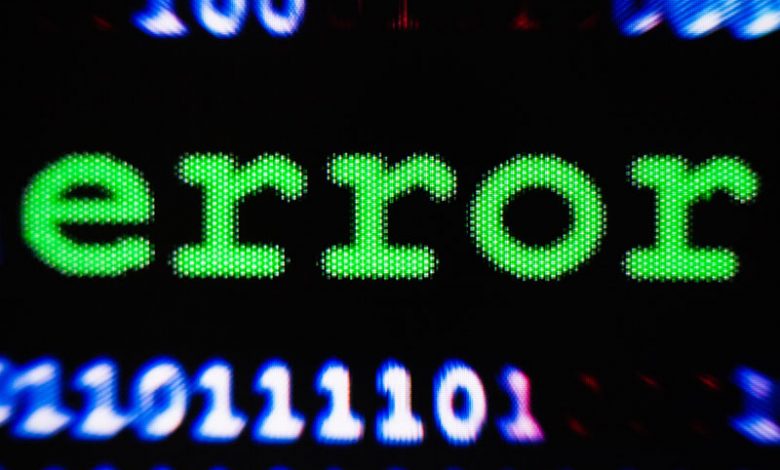How to Fix the 'Failed to Locate Framework.dll' Error

The "Failed to locate Framework.dll" error is a message that users may encounter when attempting to launch or install a particular program. That is a standard error related to missing or corrupted Dynamic-Link Library (DLL) files, specifically the Framework.dll or Microsoft.Build.Framework.dll, which are vital components in the operation of software applications.
The "Failed to locate Framework.dll" error is an indication that the required DLL file by a program could not be identified. This DLL file is critical in ensuring the software can launch and run properly. When it is corrupted or missing, it creates a fault that can cause the program to fail during the early start-up or later in its operation. The error messages that typically appear are:
- "There was a problem starting Framework.dll. The specified module could not be found."
- "Error loading Framework.dll. The specified module could not be found."
- "The code execution cannot proceed because Framework.dll was not found. Reinstalling the program may fix this problem."
- "Framework.dll is either not designed to run on Windows or it contains an error. Try installing the program again using the original installation media or contact your system administrator or the software vendor for support."
The issues surrounding the Framework.dll file are not limited to its absence or corruption. Other common problems associated with this DLL file include error notifications about a fault in its code execution, the claim of the file not being originally designed to run on a Windows operating system, or the file containing a bug. These issues can result in the need for software reinstallation or seeking support from system administrators or software vendors, respectively.
Table of Contents
Common Causes
The emergence of the "Failed to locate Framework.dll" error is often due to several causes. Notable ones include damaged or missing system files, program corruption, and disabling of the .NET Framework, among others. These issues can cause the DLL file to be unidentifiable or inaccessible by the program needing it for its operation, thereby producing the error.
Before attempting any fixes, some preliminary steps may potentially resolve the "Failed to locate Framework.dll" error. These include:
- reinstalling the program generating the error and
- ensuring your Windows operating system is up to date.
Reinstall the Program Causing the Error
Reinstalling the program associated with the error may help resolve the issue. Even after restoring a missing or corrupted DLL file, some programs may fail to recognize it. Occasionally, the underlying problem lies with the program being corrupted and failing to locate an existing DLL file.
Uninstall the problematic program from the Control Panel by selecting 'Uninstall a program' under the program's options. After uninstallation, install the program again to see whether the error has disappeared. If you're using a game on Steam, check your game files' integrity to fix the problem.
Update the Windows Operating System
Another potential resolution involves updating your Windows operating system to ensure you have the latest version installed. Windows updates often include vital system and security upgrades that can resolve underlying issues causing various errors.
Moreover, installing the latest Visual C++ Redistributable on your Windows machine may be necessary, as it often contains essential components for running multiple applications. Also, checking for and installing any relevant optional updates could be beneficial. For instance, a .NET Framework optional update may directly address the issue.
Methods for Fixing the “Failed to locate Framework.dll” Error
Several tried-and-tested methods can help resolve the "Failed to locate Framework.dll" error. Here are five practical approaches:
- Run a Deployment Image & Servicing Management (DISM) Scan: Running a scan through the Deployment Image & Servicing Management (DISM) tool can potentially rectify the error. This built-in Windows utility can help fix various system corruptions that prevent DLL files, such as the Framework.dll, from being located by programs.
- Run a System File Checker (SFC) Scan: Windows includes another in-built tool called the System File Checker (SFC). When run, it scans and repairs corrupt or missing system files that could be triggering the Framework.dll error. This utility is handy in cases where the affected DLL file has been deleted erroneously or corrupted.
- Install the Newest .NET Framework build: Installing the latest version of .NET Framework can also solve the "Failed to locate Framework.dll" error, given that the Framework.dll file is associated with .NET Framework. If the .NET Framework on your computer system is obsolete or corrupted, updating it can provide a much-needed fix.
- Disable and Re-Enable the .NET Framework: If updating the .NET Framework does not solve the issue, consider disabling and re-enabling the feature. That can often force your system to re-establish proper connections with the Framework.dll file, thus eliminating the error.
- Re-Register all DLL Files: Re-registering all DLL files can be another effective solution for handling the "Failed to locate Framework.dll" error. In some cases, while the DLL files may be present and functioning perfectly, the programs may fail to recognize them due to registration issues. Re-registering the DLL files forces the programs to recognize these files again.
In conclusion, encountering the 'Failed to Locate Framework.dll' error can be frustrating, but armed with the troubleshooting steps outlined in this article, you're well-equipped to resolve the issue swiftly. Remember that this error typically stems from problems with the application's installation or system files. By checking the application's integrity, updating relevant software, and ensuring proper compatibility, you can effectively address the error and restore the smooth functioning of your software. With patience and the right approach, you'll overcome this error and return to using your applications without hindrance.




